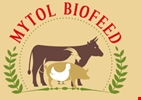Why Probiotics
Probiotics ?
Probiotics are Defined as Live Micro organisms which confer Health Benefits to the Host when administered in appropriate and regular quantities.
The Use of Probiotics for Farm Animals:
- Poultry- Broiler increasesweight (Meat)
Layersincreases EggProduction.
Breeder – increases life expectancy.
- Ruminants (Animals) - (Cows, Buffaloes, Goats, Pigs.) -Beef andMilkProduction.
- AquacultureforFishandPrawnFarming.
Role of Probiotics to Substitute and Reduce the Use of Antibiotics:
- InImprovingoverallAnimal Health & Life expectancy.
- Preventing & TreatingDiseases in Animals.
- ImprovingFoodto Conversion Ratio(FCR).
- ActlikeavaccinationtostimulatetheImmuneSysteminanimals.
Probiotics are very Safe:
- AntibioticscanAccumulateintheAnimaland canthenreachHumansconsumingtheMeat / Milk / Eggs / Fish.
- Probioticshave no harmful side effectsto animalsor Humans consuming animal products.
Probiotics act for Long Time.
- Antibioticsactfor a few hours WHILE Probiotics act for 6 months.
Antibiotics (used in sub - therapeutic doses)can causeResistance.
- Infection of the Animal and Humans with Resistant Superbugs .
In most Western Countries
- Antibioticsuse is notallowed.
Mechanism of Action of Probiotics :
Production of Organic Acids (lactic or acetic)
- ThisDecreasesthegutpH.
- CreatesfavorableconditionsforgrowthofHealthy (good)Bacteria.
- DecreasesriskofBadBacteriacolonization.
Competitive Inhibition of Pathogenic Bacteria .
- Bytheiraffinityfornutrientsandadhesionsites.
- PreventsgrowthofBadBacteria.
Release of Antimicrobial Peptides - Bacteriocins
- StopsGrowthofBad Bacteria.
Produce Enzymes.
- To DestroyBacterialpoisons.
- Help Digestion&Assimilationof feed.
Produce Nutrients & Growth Factors.
- These arestimulatorytoBeneficialGutBacteria.
Immunomodulation.
- Actlike avaccinationtostimulatetheImmuneSysteminanimals.
PROBIOTIC SPECIES WISE EFFECT
- Ruminants : (Cattle, Goats, Camels.)
- YoungRuminants :
- Promoting Optimal Maturation of Rumen Microbiota.
- Increasing Digestive Safety at Weaning.
- Reducing Risk of Pathogen Colonisation.
- DairyCattle:
- Increasing milk yield and quality.
- Increasing feed efficiency.
- Promoting Health. (limit acidosis).
- BeefCattle :
- Promoting Weight Gain.
- Increasing Feed Efficiency.
- Promoting Health. (reducing acidosis).
Limiting Shedding of Human Pathogens.
PROBIOTIC EFFECT ON MILK PRODUCTION :
- IncreaseinMilkproductionof8to10%overnormalyield.
- MilkProductioninCattlewhichhasDecreasedby25%ormore/Ceasedaltogetherafterdiseaseorduetoanyotherreasonisrestoredtonormallevels.
- TheMilkisofHigherQuality :
- TheSolidsNotFat(SNF)Contentincreased
ie. Milk Protein Content is more.
- TheMilkhasalsohigherTotalLipidConcentration.
- MorePriceperLiter.
PROBIOTIC EFFECT ON PIGS :
- GestatingPigs .
- Improves Diet Digestibility.
- Limit Constipation .
- Decreases Stress.
- LactatingPigs&Piglets.
- Improve Colostrum Quality,
- Milk Quality & Quantity .
- Increases Litter Size & Vitality.
- Increases Piglet Weight.
- Reduce risk of Diarrhoea.
- FatteningPigs.
- Improve Feed Efficiency.
- Improve Meat Quality.
- Reduce risk of Diarrhoea.
- PROBIOTICEFFECTONPOULTRY :
- BroilerChicken –
- IncreasedResistancetopathogenicinfectionby
Salmonella, E.coli, C. perfringens.
- IncreasesWeightofChickensingramsperday
by 8 – 12% thru breeding period.
- LayerChickens ---
- IncreasesFeedEfficiencyinEgglayingHens.
- ImprovesQuantityandQualityofEggsproduced.
- ReducesFlyContaminationoftheExcretaof Layers
This in turn reduces infection & Menace of flies
